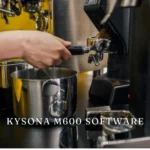Welcome to the fascinating world of vacuum technology, where precision and control are paramount. Imagine a tool that allows you to peer into the invisible realm of negative pressure with ease and accuracy. Enter the vacumetro – an essential device for monitoring vacuum levels in various industries. Let’s dive deeper into what vacumetros are, how they work, and why they play a crucial role in maintaining optimal conditions across different applications. So buckle up as we explore the ins and outs of these remarkable instruments!
What is a Vacumetro?
Vacuum technology is essential in various industries, from manufacturing to research and development. At the heart of monitoring vacuum levels lies a crucial tool known as a vacumetro. But what exactly is a vacumetro? Essentially, it’s a device designed to measure and display the pressure within a vacuum system accurately.
A vacumetro comes in different types, ranging from analog gauges to digital meters with advanced features. These devices are equipped with sensors that can detect even slight changes in pressure levels. Users can then interpret this data to ensure optimal performance of their vacuum systems.
Using a vacumetro involves connecting it to the designated port on the equipment and observing the pressure readings displayed on its screen or dial. By regularly monitoring these levels, operators can identify any deviations from the desired pressure range promptly.
Stay tuned for more insights into how vacumetros play an integral role in maintaining efficient vacuum processes across diverse industries!
Types of Vacumetros
When it comes to monitoring vacuum levels, there are different types of vacumetros available on the market to suit various needs.
One common type is the analog vacumetro which provides a visual display of vacuum levels through a traditional gauge or meter. It’s simple and easy to read, making it suitable for basic applications.
On the other hand, digital vacumetros offer more advanced features such as precise measurements, data logging capabilities, and sometimes even remote monitoring options. These modern devices provide accurate readings and enhanced functionality.
Some vacumetros come with additional accessories like probes or sensors that can be attached to different equipment for specific measurement requirements. This versatility makes them adaptable to a wide range of industries and applications.
Whether you prefer analog simplicity or digital precision, there is a type of vacumetro out there to meet your vacuum monitoring needs.
How to Use a Vacumetro?
When it comes to using a vacumetro, the process is straightforward yet crucial in maintaining optimal vacuum levels. Ensure that the vacumetro is properly calibrated before use to guarantee accurate readings. Next, connect the vacumetro to the system or chamber you wish to monitor.
Once connected, power on the vacumetro and allow it to stabilize for a few moments. Take note of the initial reading displayed on the screen. Throughout operation, regularly check and record vacuum levels at specific intervals.
If adjustments are needed, refer to the manual for guidance on calibrating or troubleshooting any issues. Remember to handle the vacumetro with care and store it properly after each use to prolong its lifespan.
Monitoring vacuum levels effectively with a vacumetro ensures efficiency and reliability in various industries where vacuum technology is essential.
Importance of Monitoring Vacuum Levels
Maintaining optimal vacuum levels is crucial in various industries ranging from semiconductor manufacturing to food packaging. Monitoring vacuum levels ensures that processes are running efficiently and effectively, ultimately leading to higher quality products.
By closely monitoring vacuum levels, businesses can detect any potential leaks or system malfunctions early on. This proactive approach helps prevent costly downtime and production delays.
Consistent monitoring of vacuum levels also plays a key role in ensuring product consistency and integrity. Whether it’s preserving the freshness of perishable goods or achieving precise results in scientific experiments, maintaining the right vacuum level is essential.
In industries where safety is paramount, such as aerospace or pharmaceuticals, monitoring vacuum levels is critical to preventing accidents or contamination. By staying vigilant and regularly checking vacumetros, companies can uphold strict safety standards and regulations.
The importance of monitoring vacuum levels cannot be overstated; it serves as a fundamental aspect of quality control and operational efficiency across various sectors.
Applications of Vacumetros in Various Industries
Vacumetros play a crucial role in various industries, ensuring optimal performance and efficiency. In the automotive sector, vacumetros are used to check vacuum levels in brake systems, helping maintain safety standards on the road.
In the healthcare industry, these devices are essential for monitoring vacuum levels in medical equipment like suction machines and sterilization units. This ensures proper functioning and patient safety during procedures.
Moreover, vacumetros find applications in semiconductor manufacturing to measure and control vacuum conditions during the production of electronic components. This precise monitoring is vital for maintaining quality standards.
Additionally, vacumetros are utilized in food packaging processes to create a controlled atmosphere that extends shelf life by preserving freshness. Ensuring accurate vacuum levels helps prevent spoilage and waste.
The versatility of vacumetros makes them indispensable tools across diverse industries where precision vacuum measurement is critical for operational success.
Tips for Choosing the Right Vacumetro
When it comes to choosing the right vacumetro for your needs, there are a few key tips to keep in mind. Consider the range of vacuum levels you will be working with and ensure that the vacumetro you select can accurately measure within that range.
Additionally, think about the type of connection required for your application. Some vacumetros come with different fittings such as KF or NPT connections, so make sure you choose one that is compatible with your system.
Another important factor to consider is the display and readability of the vacumetro. Opt for a model with a clear and easy-to-read digital display to ensure accurate readings at all times.
Don’t forget about durability and quality. Look for a reputable brand known for producing reliable vacumetros that will withstand regular use in various environments. By considering these factors, you can confidently select the right vacumetro for your specific requirements.
Maintenance and Care for Vacumetros
Proper maintenance and care for vacumetros are crucial to ensure accurate readings and prolong their lifespan.
Regularly inspect the vacumetro for any signs of damage or wear, such as cracks in the casing or a damaged display screen.
Clean the vacumetro after each use using a soft cloth to remove dust and dirt that could affect its performance.
Avoid exposing the device to extreme temperatures or humidity levels, as this can lead to malfunctions.
Store the vacumetro in a safe and dry place when not in use, preferably in its protective case to prevent any accidental damage.
Follow manufacturer guidelines for battery replacement or recharging to keep the device running smoothly.
Conclusion
Vacuum technology plays a crucial role in various industries, and vacumetros are essential tools for monitoring vacuum levels accurately. By understanding what vacumetros are, how to use them effectively, the importance of monitoring vacuum levels, their applications across different industries, tips for choosing the right one, and maintenance practices to ensure their longevity – you can maximize the efficiency and effectiveness of your vacuum systems.
Remember that selecting the appropriate vacumetro based on your specific needs is vital to achieving accurate readings. Regular maintenance and proper care will not only extend the lifespan of your vacumetro but also ensure its reliability when measuring vacuum levels.
Incorporating vacumetros into your operations can lead to improved productivity, quality control, and overall performance in maintaining optimal vacuum levels. Stay informed about advancements in vacumetro technology to make informed decisions that benefit your processes and business outcomes.
FAQs
Q:What is the role of a Vacumetro in vacuum technology?
Ans: A Vacumetro measures and displays pressure levels within vacuum systems accurately, crucial for maintaining optimal conditions.
Q: What are the different types of Vacumetros available?
Ans: Vacumetros come in analog and digital forms, each offering unique features suited to various applications and preferences.
Q: How do you effectively use a Vacumetro?
Ans: Proper calibration, connection to the system, and regular monitoring of readings ensure accurate vacuum level measurement.
Q: Why is monitoring vacuum levels important in industries?
Ans: Monitoring vacuum levels ensures efficient processes, prevents downtime, maintains product quality, and upholds safety standards.
Q: What are some common applications of Vacumetros in industries?
Ans: Vacumetros are used in automotive, healthcare, semiconductor manufacturing, and food packaging industries for measuring and controlling vacuum conditions.







